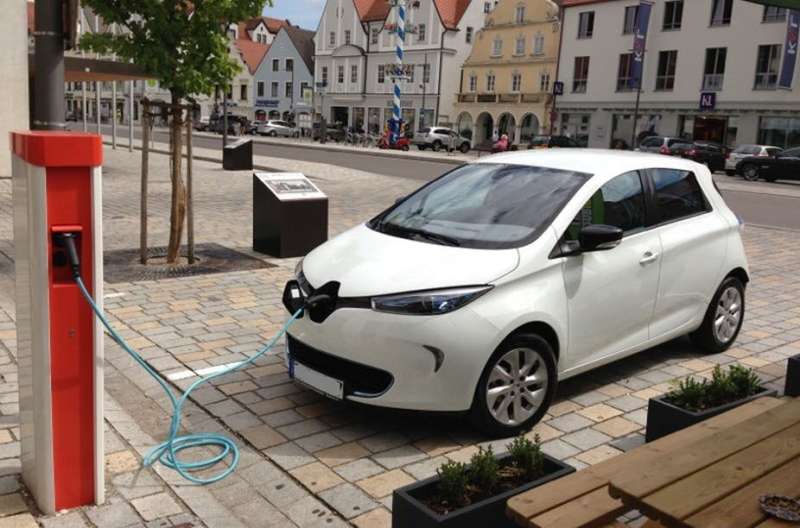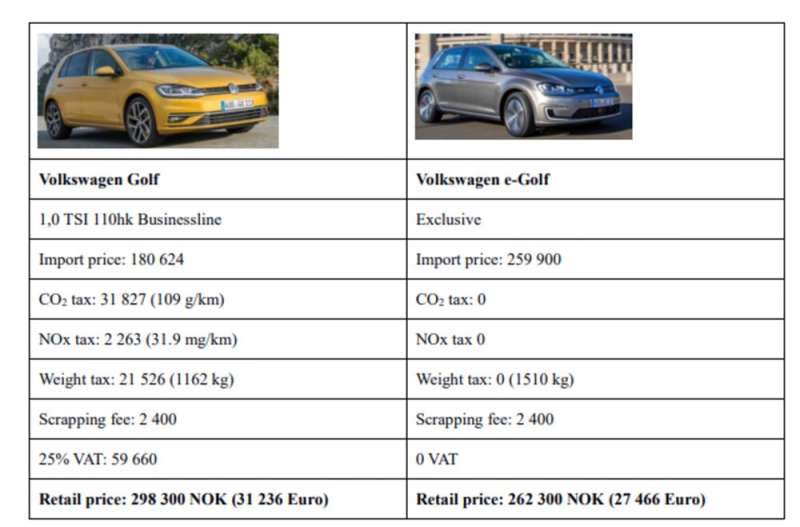Electric vehicles as an example of a market failure

Electric vehicle revolution is well under way. Norway ambitiously heads toward having all new cars sold as zero-emission by 2025. China continues to be one of the major drivers of EV boom. The US market experiences strong growth, driven by models from Tesla, Chevrolet and Nissan. The United Kingdom and France have announced they would ban new petrol and diesel vehicles sales by 2040.
Electric cars are perceived as a positive externality of consumption on the society. To fight global warming, governments have implemented different policies to stimulate consumer demand.
But just how sustainable is demand for electric vehicles and how long will governments fuel it? There is also the question of hidden costs for stakeholders like the Democratic Republic of Congo, major supplier of cobalt used for EV batteries.
Norway hits new highs with EV market penetration
A stellar example of a country that's fully charged to go electric is Norway. It has the highest number of electric vehicles per person in the world, with close to 300,000 registered units in its EV fleet in 2018. According to the European Alternative Fuel Observatory, almost 50% of the cars purchased in Norway in 2018 are electric.
What lies behind such impressive result that puts Norway ahead of others? Answer seems clear: change of consumer habits through comprehensive incentive package introduced gradually since the 1990s. One of the key policies is Norwegian car-taxation system, based on the principle that the more you pollute, the more you pay. Tax for a new car is calculated by combining weight, CO2 and NOx emissions. It is progressive, making big cars with high emissions very expensive. This results in most electric vehicles becoming cheaper compared to similar petrol models.
In addition, other incentives are in place such as 25% VAT exemption for new EV purchases, road toll exemption, low annual road tax, free access to municipal parking and ferries, access to bus lanes and good network of public charging stations.
How long can it last?
But how long will governments continue incentive schemes and can EV market roll on its own? The main concern with subsidies is they're addictive – once put in place, they're difficult to end. Budgets are also tight and incentives of this magnitude put pressure on public finances.

In October 2018, the UK announced subsidy cuts on electric and hybrid vehicles, making models such as Mitsubishi Outlander PHEV and the Toyota Prius Plug-in no longer eligible for grants. This adds thousands of pounds to the price of these cars, and many are concerned it could turn customers away from less-polluting vehicles.
China plans to terminate EV subsidies by 2020. The phase-out process is already in place, with 30% cuts planned for this year. The rationale is shift toward competitiveness, pushing car producers to find cost reductions of their own, as sales volume grows.
The Trump administration has also signalled a possible end of renewables subsidies in the near future. Announcements from the White House, followed by a series of angry tweets from the president, followed General Motors' announcement that it would end production in five automotive factories in the United States and Canada.
Although Democrats will certainly fight any such eventuality, it brings uncertainty among US car manufacturers, who continue to lobby for additional incentives.
Who bears the costs?
Another question is, who benefits most from subsidies? A Manhattan Institute report on EVs highlights the fact that more than 50% of EV buyers in the United States lived in households with annual income of at least $100,000, and 20% had yearly incomes over $200,000. The conclusion is that subsides come at the expense of lower-income drivers of gasoline-powered cars who cannot really afford to buy any new vehicle, much less an electric one. It is they who end up paying for highway maintenance costs through fuel taxes.
Also, as more electric vehicles hit the streets, electricity replaces fuel consumption. The International Energy Agency estimates that by 2030, electricity could displace about 4,8 million barrels of petrol and diesel used per day. This could result in revenue loss of close to $100 billion in fuel taxes, major source of financing infrastructure development. Thus, governments need to find alternative taxation income and someone needs to bear this cost.
And while some nations embrace "going green", others might get left behind. There is a need for discussion on how the shift from internal-combustion motors to electric vehicles can be inclusive of those who need it most.

Darker side of the electric car bonanza
While much of the developed world heads enthusiastically toward vehicles that pollute less, the celebration isn't universal. The Democratic Republic of Congo supplies two-thirds of world's cobalt, essential for EV batteries. This Central African nation chronically suffers from "natural resource curse": while "blessed" with richness in minerals, it remains among the poorest nations in the world.
In the absence of formal employment, hundreds of thousands of Congolese turn to mining. UNICEF estimates there are more than 40,000 children working in mines on jobs such as underground digging, transportation of heavy loads or washing mined cobalt in rivers.
Many adult and children workers have no modern machinery or even basic protective clothing, and the health consequences can be catastrophic. Cobalt even has disease named after it – cobalt lungs, a form of pneumonia caused by overexposure to cobalt dust that leads to permanent incapacity and in many cases, death.
Years of mining have also taken their toll on Congolese environment. Untreated waste and toxic substances pollute areas near the mines, exacerbating health problems of the locals. In addition, worrying radioactivity levels were reported in some of the mines, as southern Congo has vast deposits of not only cobalt and copper, but also uranium. In November 2018, Glencore, one of the world's leading cobalt producers, temporarily suspended sales of cobalt from its Kamoto mine due to radioactivity detected in supplies.
The long road ahead
It may seem that electric cars are on the verge of replacing internal-combustion vehicles. But while their market share is growing, it still represents only 2% of car sales in 2018. Although there is raising awareness on environmental issues, we must remember that people tend to seek to maximise their personal utility. Because of this, electric vehicles can be considered an example of market failure – their benefits to society as a whole exceed those to individuals, so they're undersupplied by a free market. Another example is vaccinations, which may require a shot (briefly painful to one person), but can help provide collective immunity (beneficial for all). Government regulations, subsidies and other methods can help insure that such failures of the free market are compensated for.
In the case of electric vehicles, however, once government subsidies are phased out, it remains to be seen whether consumers will perceive electric vehicles as economically viable option. A lot will depend on the ability of car manufacturers to cut production costs, and also how much countries have advanced in installing related infrastructure such as charging stations.
In any case, we are in for a long ride and a lot of uncertainties along the way.
Provided by The Conversation
This article is republished from The Conversation under a Creative Commons license. Read the original article.![]()





















